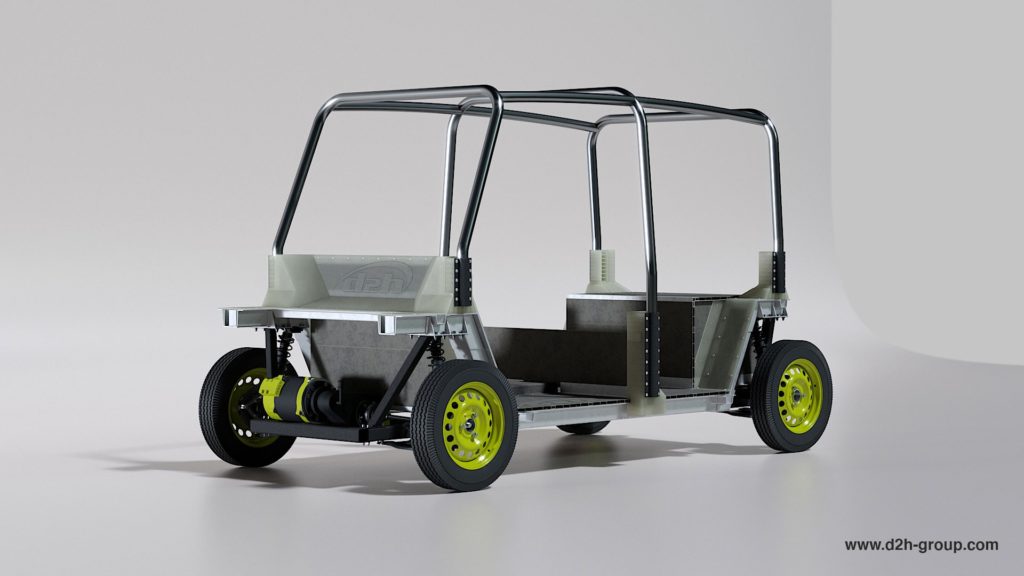A UK-based engineering company is leading a consortium to design an innovative, low-cost electric vehicle chassis to take over the market of the mythological Tuk-Tuk. If you have been anywhere in Asia or India, you probably have seen oceans of Tuk-Tuks on the road. D2H wants to create a product that has the potential to be an environmentally compatible alternative utility vehicle to the iconic three-wheeler.
D2H is the lead partner in a consortium funded by Innovate UK’s IDP15 scheme, for industry-led research into on-vehicle technologies that accelerate the transition to zero emission transport in the UK and globally. The company chose a different approach for its all-electric project than other companies, according to Matthew Hicks, D2H Engineering Director. “Many electric vehicle projects target high-performance, high-value chassis concepts,” he said. “While these are great engineering projects, we identified a need for a very low cost, zero emissions utility vehicle which can be adapted to different configurations and offers the potential for much greater uptake.”
The design of this vehicle is so simple and light that from the pictures provided to WhichEV, it looks like something that you can buy as a flatpack at Ikea and later on put it together at home. It's reminiscent of the EAV eBike we covered in November. However, a lot of work has been made on the chassis to make it durable and easier to produce and that is why D2H chose to use polymer Coventive Composites to develop a jute-based natural fibre thermoplastic, according to Hicks.
“This material has many advantages – the jute is readily available in the target markets and is both lightweight and relatively strong,” he said. “When compared to metal alternatives, fibre-reinforced thermoplastics have reduced manufacturing cycle times and energy requirements and allow high levels of detail to be moulded in, so they typically require less post processing. It was a material we wanted to incorporate into our design.”
The design meets the L7E Heavy Quadricycle EU classification, so although currently exempt from crash test assessment, it was always a design imperative that the new vehicle raised the bar for safety performance in its price sector. In its present form the design uses proprietary suspension, brakes and steering from a current production chassis, with front-wheel drive from a front-mounted motor and battery packs stored in between the rear wheels. The design weight is 480 kg, not including batteries.
Hicks also pointed out that these vehicles will be built to last throughout the day, saying, “we envisage power and cooling sufficient for 12 hours continuous use – these are utility vehicles and need to be kept in service for long periods”.
D2H plans to move to the prototype and testing stage with the help of further partners. “Having made good progress so far, we are keen to take this project further,” says Hicks. “The development of the vehicle will require like-minded powertrain and battery providers, who can provide robust and very low-cost alternatives to petrol combustion units.”
